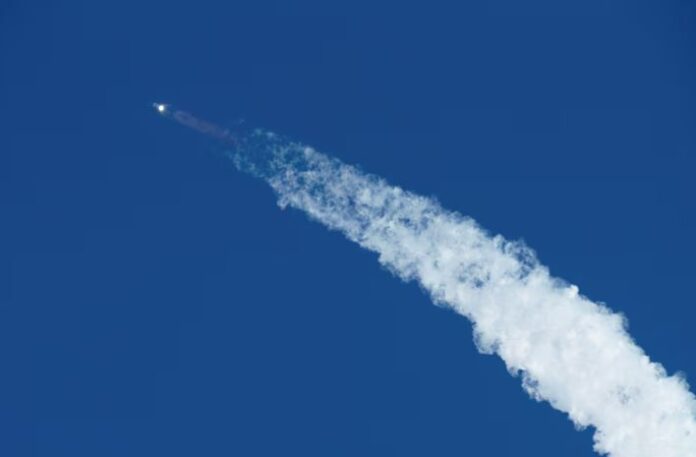A SpaceX Starship rocket broke apart in space minutes after launching from Texas on Thursday, forcing airlines to reroute flights over the Gulf of Mexico to avoid falling debris. The incident marks a setback for Elon Musk’s flagship rocket program, designed to push the boundaries of space exploration.
The newly upgraded Starship, carrying a test payload of mock satellites, launched at 5:38 p.m. EST (2238 GMT) from SpaceX’s South Texas facilities. Eight minutes later, mission control lost contact with the upper stage. Video captured by Reuters showed streaks of orange light across the Haitian sky, leaving smoke trails behind.
“We did lose all communications with the ship – that is essentially telling us we had an anomaly with the upper stage,” said SpaceX Communications Manager Dan Huot. Minutes later, the ship’s loss was confirmed.
This is not the first mishap for Starship, but the incident caused unusual disruptions to air traffic. Dozens of commercial flights were rerouted or delayed, including departures from Miami and Fort Lauderdale, which were delayed by about 45 minutes. The Federal Aviation Administration (FAA) briefly slowed and diverted planes, resuming normal operations once the debris threat had passed.
The Starship’s upper stage, featuring significant upgrades, was meant to perform a controlled splashdown in the Indian Ocean about an hour after launch. Elon Musk later posted on X (formerly Twitter), “Success is uncertain, but entertainment is guaranteed!” He attributed the failure to an internal liquid oxygen leak that caused a pressure buildup, leading to the rocket’s breakup.
The FAA is expected to investigate the mishap, which could temporarily ground the Starship program. Previous FAA investigations have delayed launches as the agency assesses safety risks, including whether debris fell outside designated hazard zones.
Thursday’s failure comes amid fierce competition in the private space race. A day earlier, Jeff Bezos’ Blue Origin successfully launched its New Glenn rocket into orbit for the first time.
Despite the setback, Musk remains optimistic, stating, “Nothing so far suggests pushing next launch past next month.” However, the failure threatens to derail SpaceX’s ambitious goal of conducting 12 Starship tests in 2025.
The Starship program, central to Musk’s vision of human colonization of Mars and large-scale satellite deployment, has faced technical challenges but also achieved significant milestones. The Super Heavy booster used in the mission successfully returned to the launchpad, using its Raptor engines to execute a precise landing on SpaceX’s mechanical “catching” arms.
As SpaceX navigates this latest hurdle, the mishap underscores the risks of its aggressive test-to-failure approach, even as the company strives to lead the next generation of space exploration.



